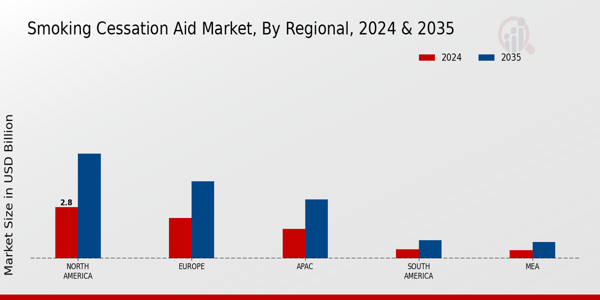Regulatory Support and Policies
Government regulations and policies aimed at reducing smoking rates significantly influence the Smoking Cessation Aid Market. Many countries have implemented stringent tobacco control measures, such as higher taxes on tobacco products, advertising bans, and smoke-free laws. These initiatives not only discourage smoking but also encourage smokers to seek cessation aids. For instance, the implementation of the WHO Framework Convention on Tobacco Control has led to increased funding for smoking cessation programs. This regulatory environment creates a favorable landscape for the Smoking Cessation Aid Market, as it aligns with public health objectives and promotes the use of cessation products.
Growing Awareness of Health Risks
The increasing awareness of the health risks associated with smoking is a primary driver for the Smoking Cessation Aid Market. Public health campaigns and educational initiatives have effectively highlighted the dangers of tobacco use, including lung cancer, heart disease, and respiratory issues. As a result, more individuals are seeking assistance to quit smoking. According to recent statistics, approximately 70% of smokers express a desire to quit, indicating a substantial market potential for cessation aids. This heightened awareness is likely to propel the demand for various smoking cessation products, including nicotine replacement therapies and prescription medications, thereby fostering growth within the Smoking Cessation Aid Market.
Technological Advancements in Cessation Aids
Technological advancements are reshaping the Smoking Cessation Aid Market by introducing innovative products and solutions. The development of mobile applications, online support platforms, and digital therapeutics has made it easier for individuals to access cessation resources. These technologies often provide personalized support, tracking tools, and community engagement, which can enhance the quitting experience. For example, studies indicate that users of mobile cessation apps are more likely to successfully quit smoking compared to those who do not use such tools. As technology continues to evolve, it is expected to play a crucial role in driving growth within the Smoking Cessation Aid Market.
Rising Demand for Natural and Herbal Products
There is a notable shift in consumer preferences towards natural and herbal smoking cessation aids, which is influencing the Smoking Cessation Aid Market. Many individuals are increasingly wary of synthetic chemicals and are seeking alternative solutions that align with their health-conscious lifestyles. Products such as herbal teas, supplements, and homeopathic remedies are gaining traction as viable options for those looking to quit smoking. Market Research Future suggests that the demand for natural cessation aids is on the rise, with consumers willing to invest in products that promise a more holistic approach to quitting. This trend is likely to create new opportunities within the Smoking Cessation Aid Market.
Increased Focus on Mental Health and Behavioral Support
The growing recognition of the link between mental health and smoking cessation is driving changes in the Smoking Cessation Aid Market. Many smokers struggle with underlying psychological issues, such as anxiety and depression, which can hinder their ability to quit. As a result, there is an increasing emphasis on integrating behavioral support and counseling into cessation programs. Research indicates that individuals who receive behavioral therapy alongside pharmacotherapy are more likely to succeed in quitting. This focus on mental health is likely to enhance the effectiveness of smoking cessation aids and expand the market, as more comprehensive solutions are developed to address the psychological aspects of addiction within the Smoking Cessation Aid Market.


















Leave a Comment